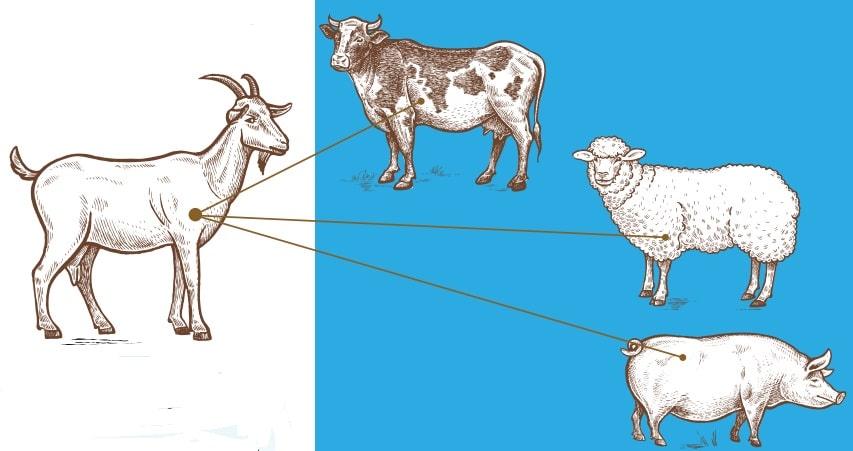How Does Goat Compare to Beef, Lamb & Pork?

Question: I was surprised to see goat meat on a couple of restaurant menus recently. How does goat compare to beef, lamb & pork?
Answer:The U.S. may take a while to catch up to other parts of the world in goat consumption, but goat meat is predicted to increase in popularity and availability (Watrous 2016). Our growing taste for world cuisines is partly what's driving this trend. Goat is widely eaten in China, India, and parts of Africa, as well as Central and South America. I first tasted goat in traditional Goat Water on the Caribbean island of Montserrat. Despite its name, Goat Water is a rich stew of meat, vegetables and spices. In markets or on menus you may see goat called "chevron," or sometimes "cabrito," which refers to a young, milk-fed goat.
Nutritionally, goat is very comparable to other meats (ESHA 2017). Roasted goat has about 122 calories per 3-ounce serving. It is lower in total fat, and therefore lower in saturated fat, than lamb, beef or pork. Like other meats, it has about 7 grams of protein per ounce. It also compares well in iron and zinc content, with about 2 g of iron and 4.5 g of zinc per 3-ounce serving.
As with any meat, the best cooking method depends on the cut and how lean it is. Goat can be grilled, roasted and braised. Some people describe the flavor of goat as gamey and similar to lamb. Others find it quite mild in flavor, with an intensity midway between pork and beef. Creative chefs today use goat in a variety of dishes, including stews, lasagna and tacos. If you haven't tasted it yet, try it in a favorite dish.
Compared with other animals raised for meat, goat can be more environmentally sustainable, which is another reason for its increasing popularity. Goats can be raised in areas that are drier, hotter and more rugged than is optimal for raising beef—and goats are more efficient at converting the plants they graze on into meat (Walker 2014).
References
ESHA Research. 2017. The Food Processor. Software version 11.1.620. Accessed Jan. 21, 2017.
Walker, E.L., & Hudson, M.D. 2004. Sheep and goats. Encyclopedia of Meat Sciences. Accessed Jan. 21, 2017. doi:10.1016/B978–0–12–384731–7.00078–7.
Watrous, M. 2016. Ten cutting–edge food trends for 2017. Food Business News. Accessed Jan. 21, 2017. www.foodbusinessnews.net/articles/news_home/Consumer_Trends/2016/10/Ten_cuttingedge_food_trends_fo.aspx?ID={44E785C7–97F8–4981–A485–68484F09B03D}&page=9.
Sanna Delmonico, MS, RDS, CHES
"Sanna Delmonico, MS, RDN, CHE, is an associate professor at the Culinary Institute of America where she teaches food safety and nutrition. She previously led programming for the CIA Healthy Kids Collaborative and the CIA-Harvard Healthy Kitchens, Healthy Lives Continuing Medical Education Conference. Prior to joining the CIA, she was an instructor at Santa Rosa Junior College where she co-coordinated the dietetic technician program. Sanna develops delicious, seasonal recipes and writes about food and nutrition for publications, including IDEA Fitness Journal. She lives in Napa, California, and is a home winemaker."





